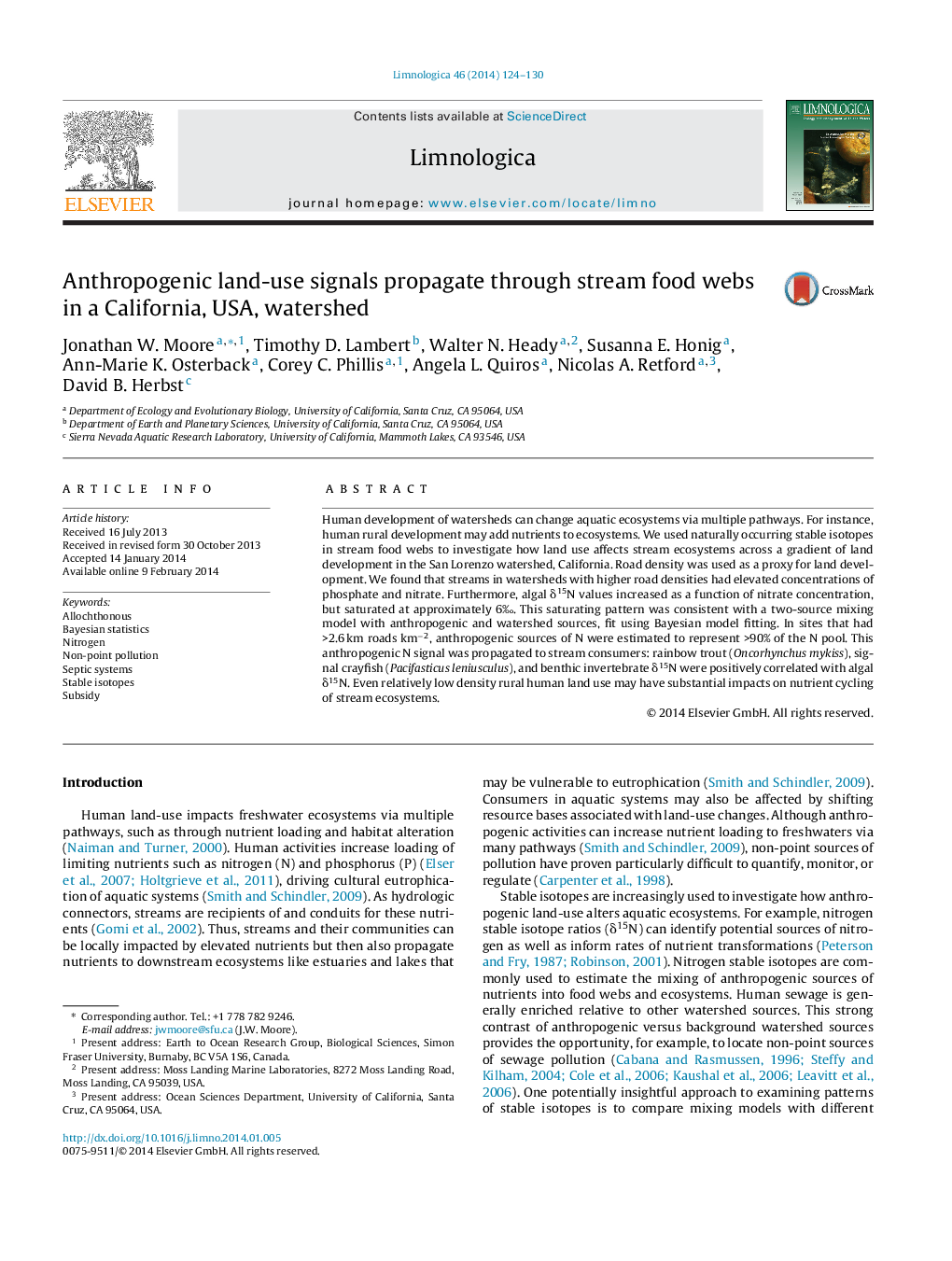| Article ID | Journal | Published Year | Pages | File Type |
|---|---|---|---|---|
| 6305638 | Limnologica - Ecology and Management of Inland Waters | 2014 | 7 Pages |
Abstract
Human development of watersheds can change aquatic ecosystems via multiple pathways. For instance, human rural development may add nutrients to ecosystems. We used naturally occurring stable isotopes in stream food webs to investigate how land use affects stream ecosystems across a gradient of land development in the San Lorenzo watershed, California. Road density was used as a proxy for land development. We found that streams in watersheds with higher road densities had elevated concentrations of phosphate and nitrate. Furthermore, algal δ15N values increased as a function of nitrate concentration, but saturated at approximately 6â°. This saturating pattern was consistent with a two-source mixing model with anthropogenic and watershed sources, fit using Bayesian model fitting. In sites that had >2.6 km roads kmâ2, anthropogenic sources of N were estimated to represent >90% of the N pool. This anthropogenic N signal was propagated to stream consumers: rainbow trout (Oncorhynchus mykiss), signal crayfish (Pacifasticus leniusculus), and benthic invertebrate δ15N were positively correlated with algal δ15N. Even relatively low density rural human land use may have substantial impacts on nutrient cycling of stream ecosystems.
Keywords
Related Topics
Life Sciences
Agricultural and Biological Sciences
Aquatic Science
Authors
Jonathan W. Moore, Timothy D. Lambert, Walter N. Heady, Susanna E. Honig, Ann-Marie K. Osterback, Corey C. Phillis, Angela L. Quiros, Nicolas A. Retford, David B. Herbst,
